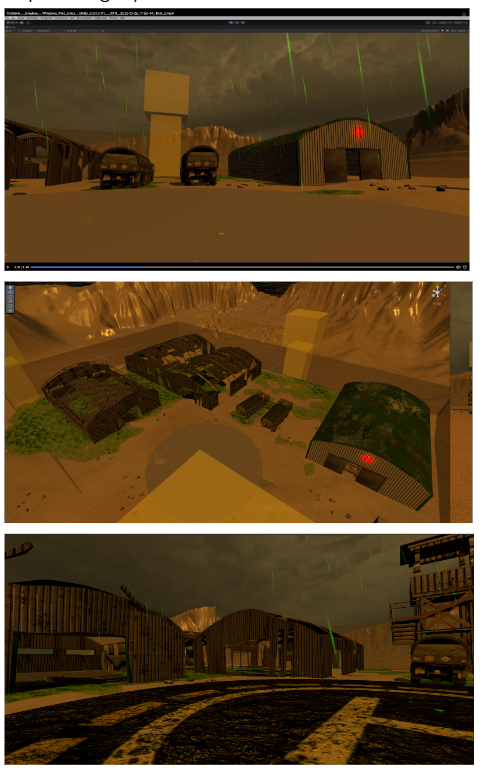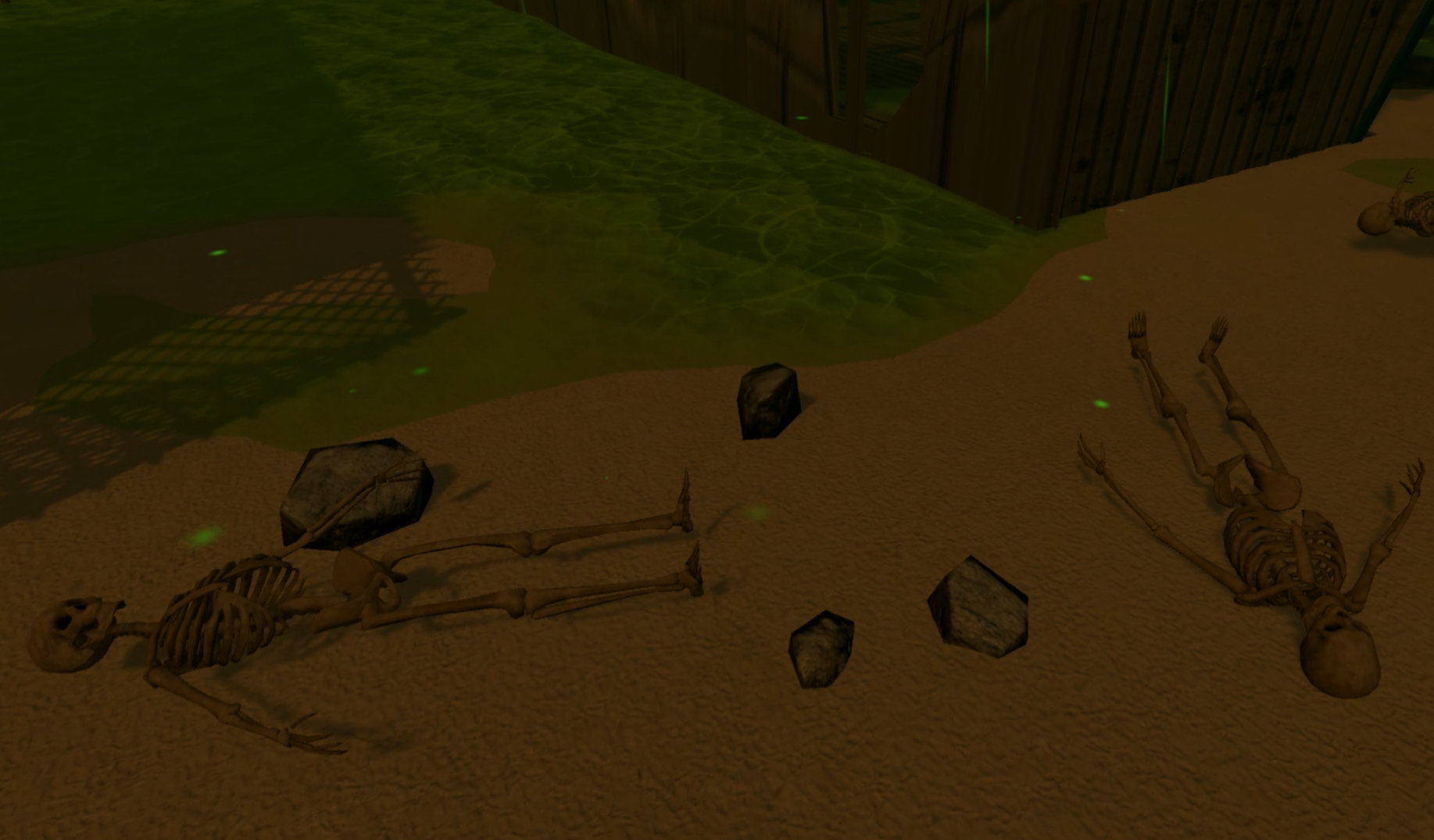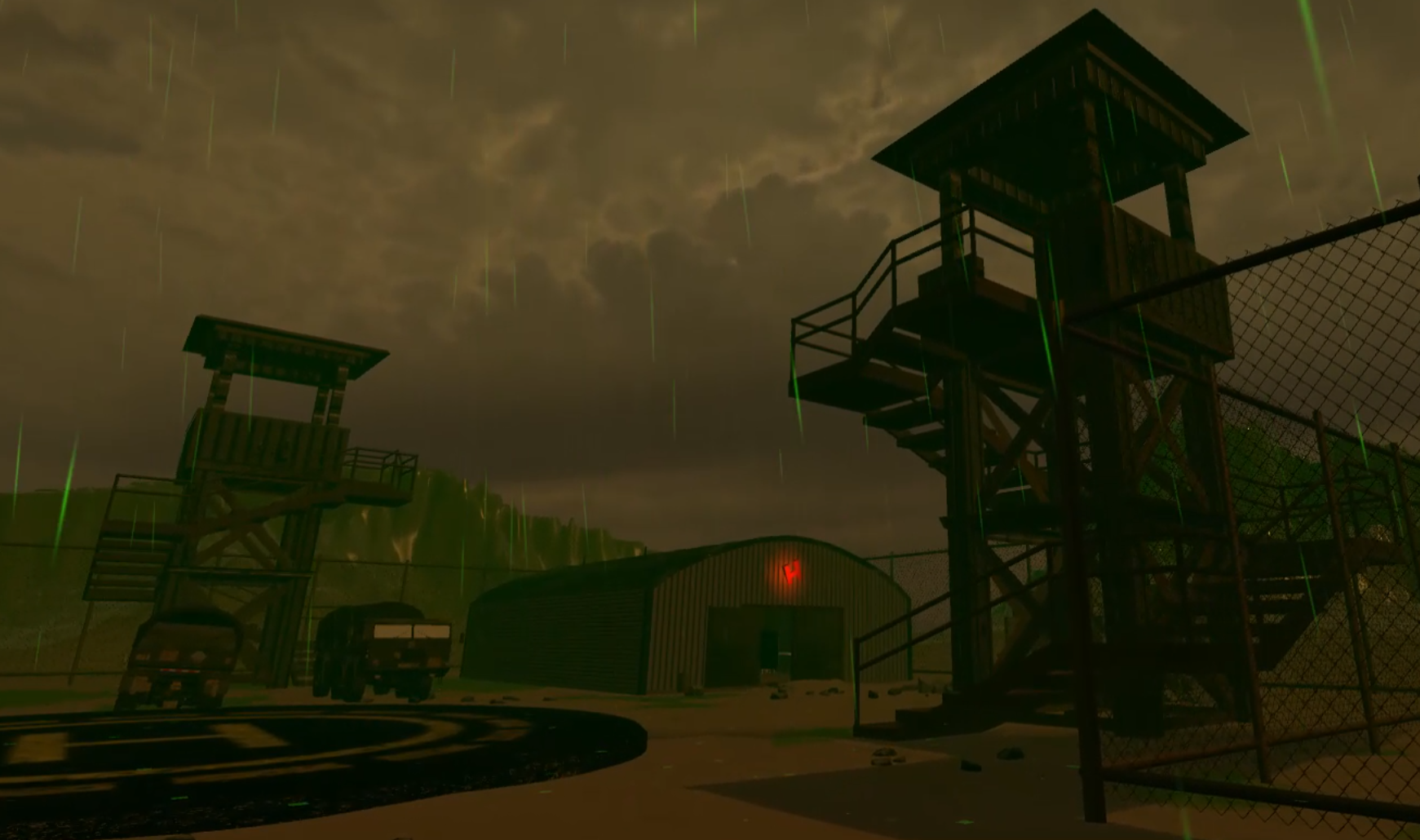Roles: 3D Developer, Gameplay Programmer | Team Size: 5
Elevator Pitch: In Nuclear Nightmare, players must navigate a post-apocalyptic wasteland filled with acid rain and radiation in order to reach an abandoned medical bunker and retrieve life-saving supplies. Using environmental storytelling and intricate level design, players are immersed in a world filled with danger and decay.
Summary of Core Gameplay: Nuclear Nightmare is a first-person walking simulator that challenges players to survive in a desolate, radioactive wasteland. Players must avoid dangerous acid rain that will reduce their health and seek shelter in abandoned buildings and other objects to survive. The ultimate goal is to reach an abandoned medical bunker and collect the last remaining supply of medicine to combat the effects of radiation.
Gameplay and Level Design
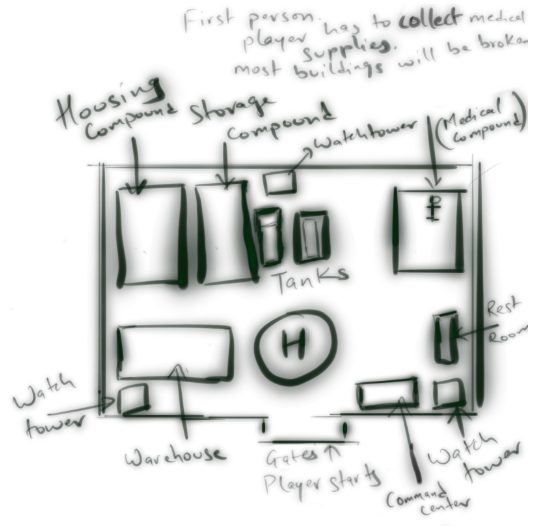
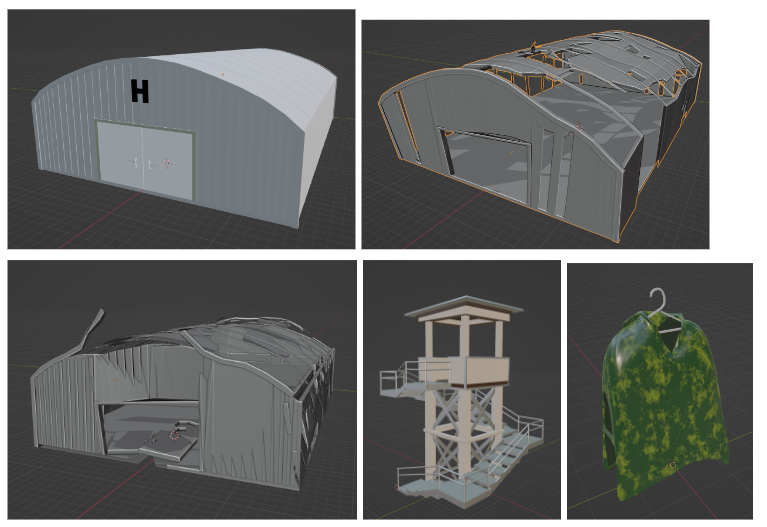 The gameplay in Nuclear Nightmare revolves around exploration and survival. As players navigate through the wasteland, they must constantly be on the lookout for shelter from the deadly acid rain that falls from the sky.
The level design is intricate and detailed, featuring a variety of buildings, objects, and obstacles for players to interact with.
The use of environmental storytelling helps to create a rich and immersive world that draws players in and keeps them engaged. The game features a mix of both indoor and outdoor environments,
each with their own unique challenges and hazards. The outdoor areas are vast and open, allowing players to explore and discover new areas of the wasteland.
The indoor areas are more claustrophobic and confined, forcing players to navigate through tight corridors and rooms filled with debris and obstacles.
The gameplay in Nuclear Nightmare revolves around exploration and survival. As players navigate through the wasteland, they must constantly be on the lookout for shelter from the deadly acid rain that falls from the sky.
The level design is intricate and detailed, featuring a variety of buildings, objects, and obstacles for players to interact with.
The use of environmental storytelling helps to create a rich and immersive world that draws players in and keeps them engaged. The game features a mix of both indoor and outdoor environments,
each with their own unique challenges and hazards. The outdoor areas are vast and open, allowing players to explore and discover new areas of the wasteland.
The indoor areas are more claustrophobic and confined, forcing players to navigate through tight corridors and rooms filled with debris and obstacles.
In addition to the level design, the gameplay in Nuclear Nightmare also features a unique health system. Players must constantly monitor their exposure to radiation and seek out medical supplies to maintain their health. This adds an extra layer of tension and strategy to the game, as players must balance their exploration and survival needs in order to succeed.
Project Goal:
The goal of Nuclear Nightmare was to create a highly immersive and engaging post-apocalyptic experience that would challenge and engage players.
The team aimed to use environmental storytelling, intricate level design, and a unique health system to create a game that would stand out in the crowded indie gaming market.
My Roles and Responsibilities:
- As the game designer, my responsibilities included developing the core mechanics and gameplay systems for the game, as well as overseeing the overall direction and vision of the project.
- As the level designer, I was responsible for designing the various environments and locations that players would explore throughout the game.
- Implemented the gameplay mechanics and controls.
- Added sound effects and music for the game.
Tools and Technologies:
- Game Engine: Unity
- Programming Languages: C#
- PC Hardware: Windows PC
- Design Tools: Adobe Creative Cloud, Davinci
- Project Management: Trello, Miro, GitHub
Challenges and Solutions:
- One of the biggest challenges in developing Nuclear Nightmare was creating a compelling and engaging game that still felt grounded in reality. The team had to balance the need for tension and danger with the desire to create a believable and immersive world.
To address this challenge, the team spent a lot of time researching post-apocalyptic scenarios and drawing inspiration from real-world examples. This helped to create a more realistic and believable world that felt grounded in reality, while still being engaging and compelling for players. - Another challenge was developing the acid rain mechanic and health system in a way that was challenging but not frustrating for players. The team experimented with various health systems and gameplay mechanics until they found a balance that was both engaging and fair.
Links, Credits and More:
Overall, Nuclear Nightmare was a challenging and rewarding project that allowed us to create a highly immersive and engaging post-apocalyptic experience. By leveraging environmental storytelling, intricate level design, and